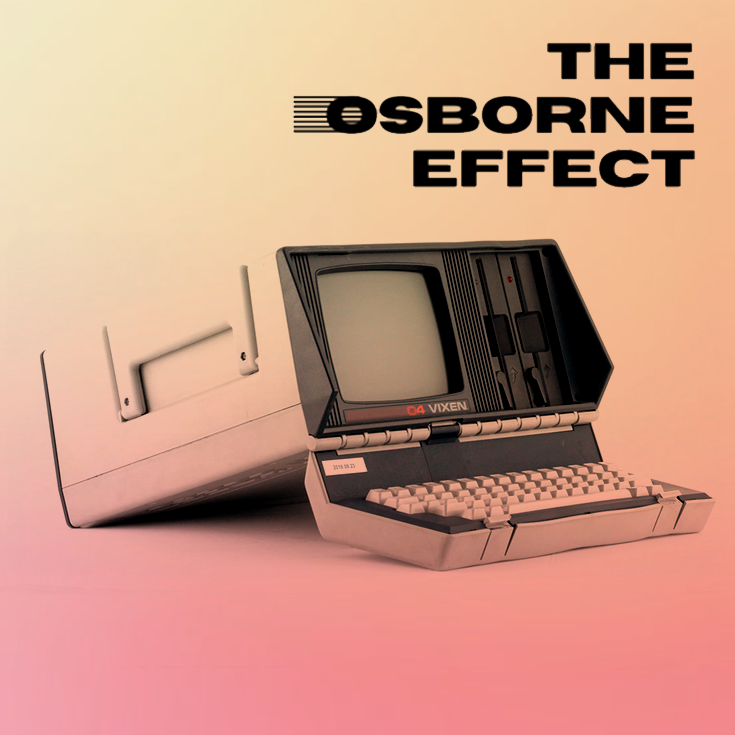by Philip Bourgeois
In this blog, I’ll share the story of my role in the Osborne Effect. And how in the spring of 1982 a meeting with Adam Osborne, the pioneer of the portable computer, led to the collapse of a multi-million dollar company.
Here’s the Wikipedia definition of the Osborne Effect: The Osborne effect is a social phenomenon of customers canceling or deferring orders for the current soon-to-be-obsolete product as an unexpected drawback of a company’s announcing a future product prematurely.
Now before I get into the Osborne, a quick aside about myself and the events that led me to create the Osborne Vixen computer.
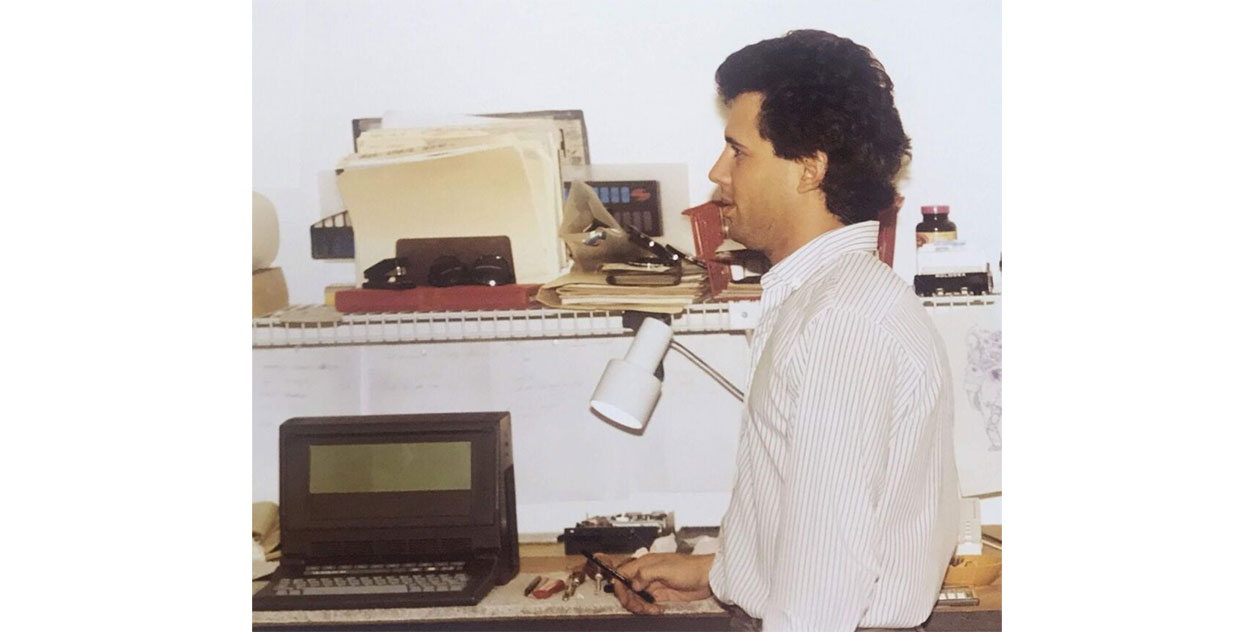
A younger me (with hair) and an Osborne 3/Morrow Pivot Prototype
I’ve run a product design consultancy called StudioRed located in the Bay Area for the last forty years. We’ve launched hundreds of consumer, medical, and IoT products. But my journey in product design began before founding StudioRed at Cal State Long Beach where I studied Industrial Design and learned an important lesson for a designer.
While studying at long beach, I went to an Industrial Design conference where I met a Braun award winner from Europe. He was a speaker at the conference and after the event, I chatted with him. He told me “If I can give you any advice, learn how things are made. You’ll know how to make smarter design choices.” I took what he said to heart.

Cal State Long Beach in the late 70’s
After the conference, I found part-time jobs at different local manufacturing companies like a mold shop, a sheet metal shop, and a plastics manufacturer. I asked myself, how do I make my designs better? How do I make them simpler, faster to assemble, easier to service… I began to gravitate towards the mechanical execution of creating products. Just creating sketch designs and art wasn’t enough.
I eventually graduated at the top of my class and I got an amazing job out of college at a design consulting firm in Santa Monica. We had clients like Xerox and Honda Motorcycle. It was wonderful fun work that got me on the consultancy path. Then I landed a job at the prestigious design firm GVO in Palo Alto.
At GVO I got the opportunity to design the third generation of Osborne computers, the Osborne Vixen.
Designing the Vixen
Now to understand what happened to the Osborne Corporation we have to talk about the predecessor to the Vixen, their 2nd gen computer known as the Osborne Executive.

An ad for the Osborne Executive, $8000 USD today adjusted for inflation
The Osborne Executive was a complex, costly, heavy, portable computer that took seven hours to assemble.
The long assembly time was linked to the number of parts needed to connect the Executive’s subassemblies. The lengthy assembly process and part count led to high manufacturing costs for Osborne.
So when I was tasked with designing the next generation of Osborne computers I applied what I had learned in college and created a simple snap-together computer.
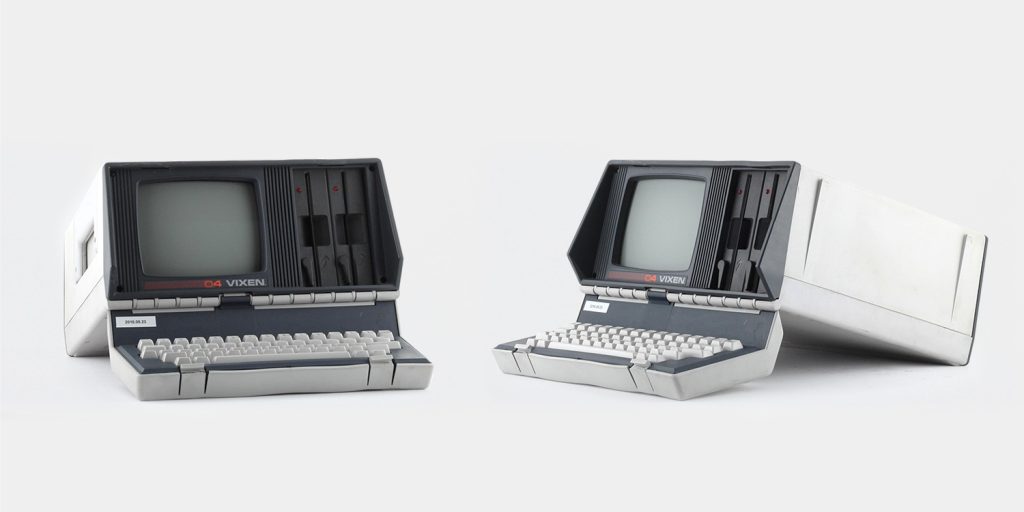
The “Vixen”
I implemented molding features in each submodule of the Vixen so that each piece snapped together to avoid complicated assembly. I also included screw bosses in case of part breaks. This led to a much smaller, simpler, and more cost-effective design. After simplifying the Vixen’s design I was able to drop the part count and drop the assembly time from seven hours… to just under four minutes.
When I finished the concept, I had a prototype ready to show the heads of the Osborne Computer Corporation.
Meeting with Adam Osborne
At the time, Adam Osborne was a Rockstar. He introduced the first portable personal computer in 1981 and created a sensation in the PC marketplace after which he founded the Osborne Computer Corporation.

Adam Osborne featured in Technologizer Magazine
I took the Vixen prototype and headed to Osborne’s offices for our meeting. When Adam arrived, an entourage of people followed behind him. I was nervous but ready to show my work.
On a Friday afternoon at 2 o clock, I walked to a little table in his conference room and assembled the Vixen prototype in front of him and his entourage in four minutes.
Adam stood up from his chair and gave me a standing ovation. I was in heaven. Here’s this Rockstar and he loved my work. It felt like I had just succeeded at my first big job after college.
He was so excited about the design that the next Monday he created a press release on the next-gen of Osborne computers “Wait till you see what we got coming”.
The birth of the Osborne Effect
After the press release, Adam began showing my prototype in private to dealers, and word of the Vixen spread. Dealers who heard about what was coming canceled their orders of the current Osborne computer and Osborne’s sales dropped significantly.
As a response, Osborne drastically cut the prices of the Osborne Executive computer. But it was too late, their sales dropped to a fraction of what they were.
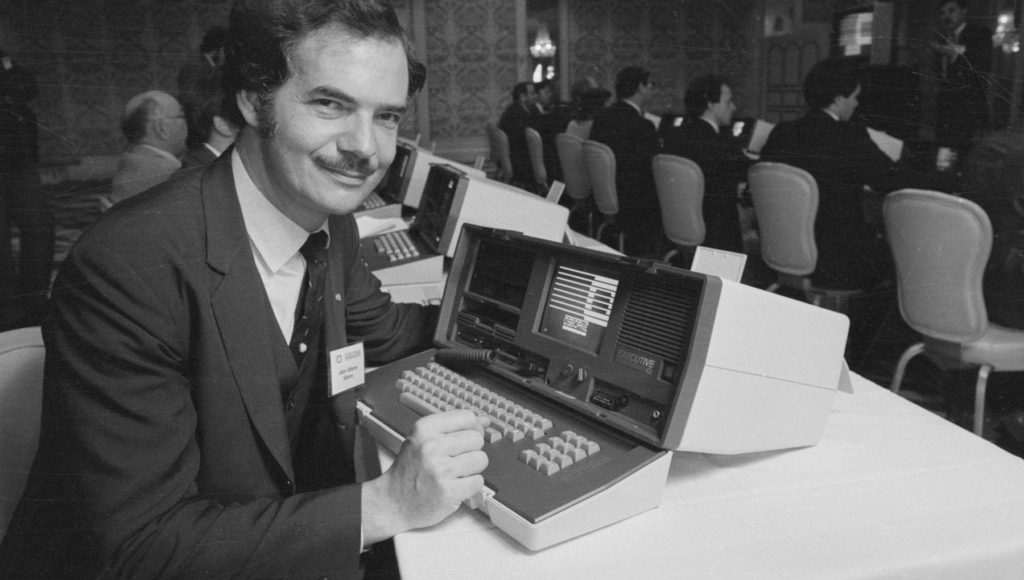
Adam Osborne with the “Osborne Executive”
The Osborne Corporation filed for bankruptcy less than a year later.
At the time I showed the prototype we were a year away from a full production solution for the Vixen. I had only shown a prototype for the computer. There was still tooling to do, engineering to touch up, and electronics to refine. It was over a million dollars just in tooling and we were manufacturing in two different countries. It was not ready for release.
As we were creating the tooling, Osborne’s sales dropped off and would never recover.
After designing the Vixen I left GVO to start StudioRed and by that time the Osborne effect was born.
The Social Phenomenon
The Osborne Effect is now an implicit part of big business. Have you ever wondered why Apple’s keynotes come out weeks before their new iPhone’s launch? You don’t want to keep your customers waiting for the next big thing, you don’t want sales of your current models to drop.
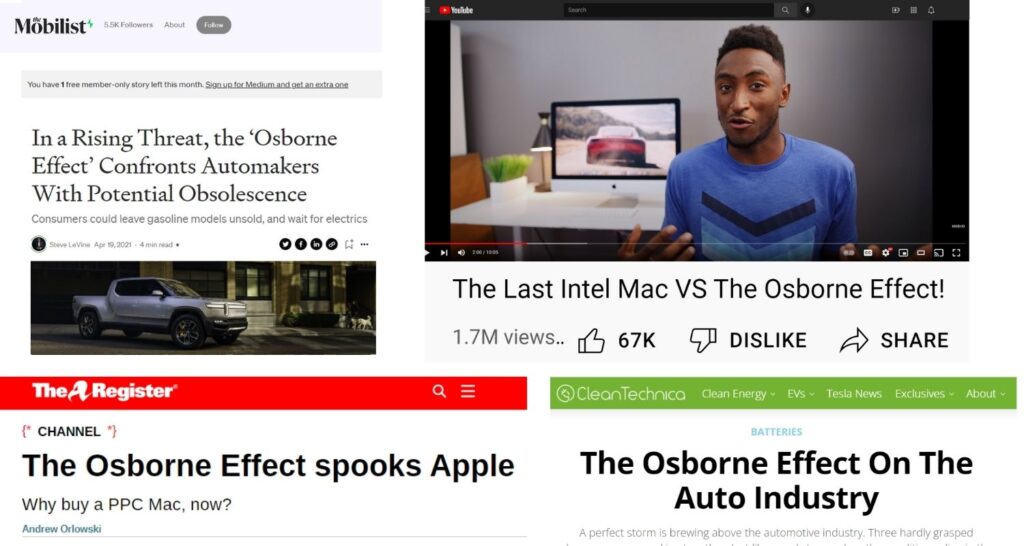
A few articles and an MKBHD YouTube video referencing the “Osborne Effect”
Now I’d like to ask, if Adam Osborne had never made a press release would his company have failed?
Well here’s a little-known Silicon Valley story…
In the early 80’s IBM wanted to partner with Gary Kildall, the man who created CPM programming, which was the operating system used on Osborne computers. So IBM flew out to meet Kildall with the intent to buy rights to his operating system. What they didn’t know was that Kildall was indifferent so instead of prioritizing his meeting with IBM, he went flying on business.
In his absence, the IBM guys became frustrated and went to talk to the Microsoft guy. Someone called Bill Gates.
Bill Gates promised IBM he could deliver them a programming language. The only thing was, he didn’t have a programming language. He ended up buying a CPM-inspired language called Q-DOS from a company called Seattle Computer Systems for $75,000 and licensed that to IBM.
So what became the winning operating system of the future? MS-DOS, not CPM. Nearly 5 years later, CPM was essentially gone.
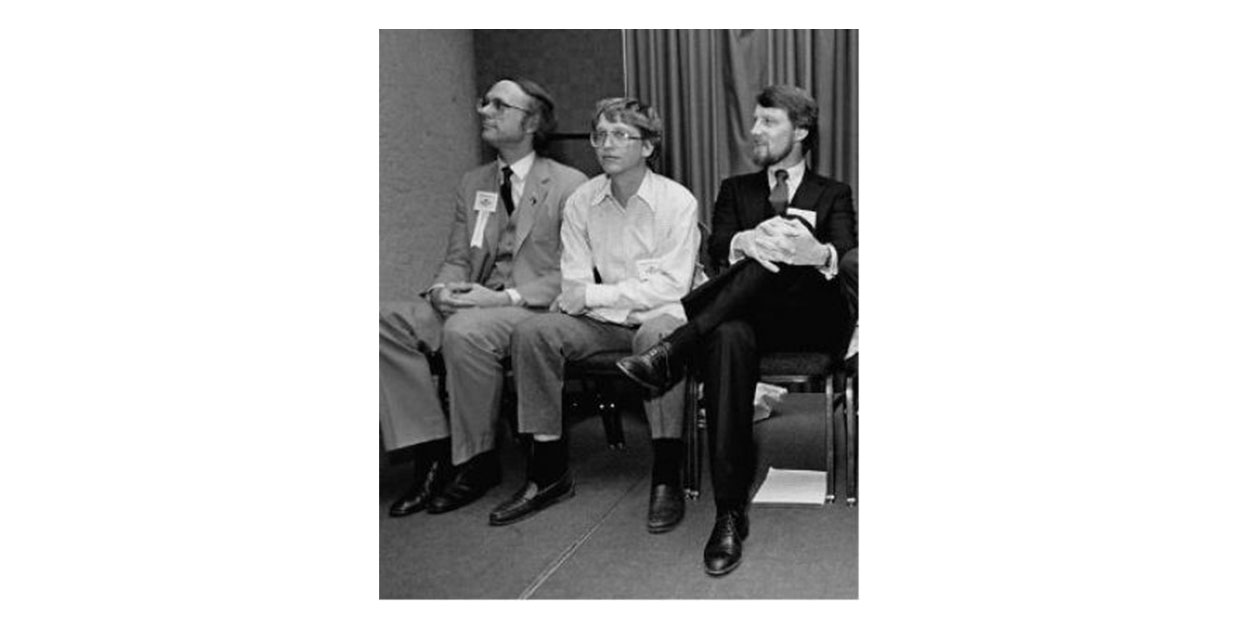
A young Bill Gates (Center) with Gary Kildall (Right)
So would Osborne still be around today? Probably not.
However, the decision to announce the Vixen before it was ready for release undoubtedly led the Osborne Computer Corporation to its early demise.
Life lessons
In all honesty, I never really looked back at the Osborne effect. I just kept plotting along and enjoying all the work at StudioRed. It’s only later that I look back and think that I may have had a small part in the way new products are released today.
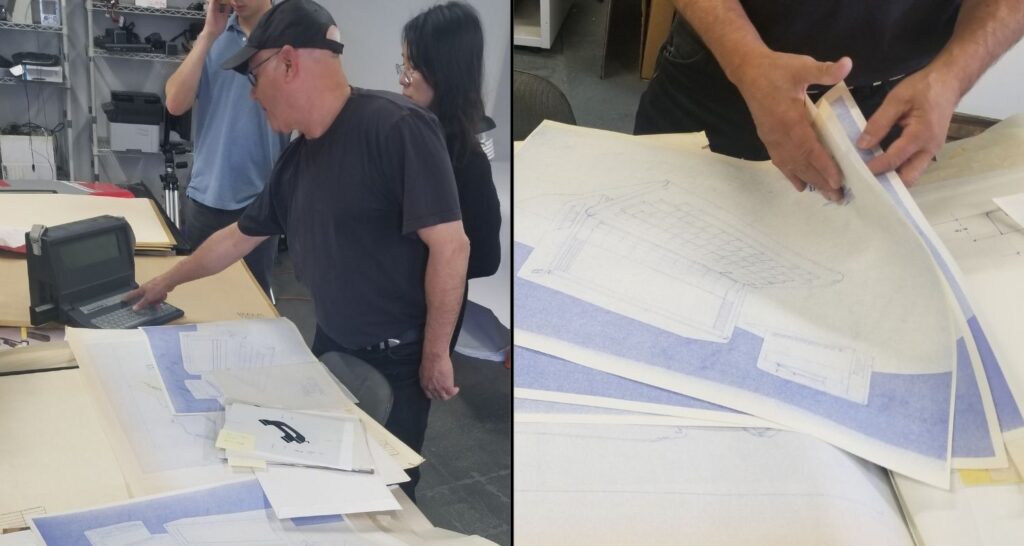
Looking back at my old sketches
So what did we learn?
First, be secretive with your products and don’t prematurely promise something to your customers that you can’t deliver on time.
But maybe and more importantly it’s to learn how things are made. I just wanted to make a better design, a more effective computer, so I worked hard at it. My design massively cut down assembly time and costs and got Adam Osborne so excited he decided to share the improvements with the press.
So I encourage you to learn how things are made. If I never had, I never would have been able to start a social phenomenon.
